Gaza Caso clínico. Case report. Metralla en la mente infantil. Shrapnel in the Minds of Gaza's Children ESP ENG

Caso clínico. Clinical case from the Gaza Hospital Nasser
ESPAÑOL
La metralla en las mentes de los niños de Gaza
He perdido la cuenta de los niños bombardeados que vi o atendí durante mis cuatro meses en Gaza. De los niños mutilados de las más aberrantes maneras, de los niños con balazos en sus cabezas
Raúl Incertis, médico anestesista y médico de urgencias español
05/08/25 | Actualizado: 05/08/25 | 12:22
Sanad Alqarra es un niño de nueve años que el pasado 15 de abril se encontraba jugando con sus amigos al balón en la calle, no muy lejos de su casa, parcialmente destruida por un bombardeo israelí, en el este de Jan Yunis, al sur de la franja de Gaza. Mientras jugaba, de repente se produjo una explosión y Sanad salió corriendo, pero a los pocos metros se desvaneció: fundido en negro.
El fundido a blanco, es decir, el momento en el que recobró la conciencia, fue para él terrible. Se despertó en un lugar inhóspito, con un tubo en su tráquea, otro en su pulmón derecho y varios tubos más pequeños en sus venas y en su uretra. Se hallaba en la UCI del hospital Nasser, aunque él no lo sabía, como tampoco sabía que había sido bombardeado por el ejército israelí. Se despertó y se encontró solo, en un lugar donde a su derecha había un hombre en una cama como la suya, que no hacía más que sollozar de dolor, y a su izquierda, una niña en coma, con una venda en la cabeza y un tubo en su boca como el suyo. El sonido de las alarmas de los monitores que registraban los parámetros vitales de los pacientes ingresados en esa sala, en la que había once heridos como él, era incesante y demasiado fuerte como para que Sanad y sus maltrechos vecinos, bombardeados como él, pudieran conciliar el sueño.
Sanad lo pasó muy mal. Una esquirla de metralla le había atravesado el cuello y le había producido un hematoma que no dejaba de crecer, deformando su anatomía y haciendo que fuera inapropiado quitarle ese tubo de la tráquea, por si el hematoma seguía creciendo y lo ahogaba al quitárselo. Solo había un centímetro de distancia entre esa esquirla metálica de su cuello y su arteria carótida: un centímetro de vida. Además, otro pedazo de metralla le había atravesado el tórax, dañándole el pulmón, y por ello le habían colocado un enorme tubo dentro de su pecho.
Tomar un café con su padre a primera hora de la mañana en el paupérrimo chamizo de la entrada del hospital e ir a visitarlo después se convirtieron en mis rutinas durante varios días. Al tercer día desde que Sanad fue extubado, le llevé una tableta de chocolate Valor que se zampó en un santiamén, pero sin alegría en la mirada. Su mirada estaba, indefectiblemente, perdida en algún lugar que los que no hemos sido bombardeados no podemos conocer. Un lugar que yo imaginaba lleno de soledad, incomprensión y, sobre todo, miedo. Sanad estaba aterrorizado. Ni los videos de YouTube de goles de Cristiano Ronaldo o los de gatos haciendo cosas divertidas que le enseñaba a diario lograban que su mirada recobrara presencia. Miraba la pantalla, pero no la miraba.
Su padre me dijo que se pasaba el día mirando al techo de su casa, y la noche sollozando de miedo por las pesadillas que sufría.
Sanad pasó por un verdadero calvario las dos semanas posteriores. Dificultad respiratoria, volverle a poner el tubo en el tórax, darle de alta, nueva disnea, reingreso en la UCI e intubación, imposibilidad de quitarle el tubo del tórax, volverle a quitar el respirador, secuelas en su tráquea… Y todo esto casi siempre solo, pues las visitas autorizadas no duraban más de dos horas al día. Pero ese hematoma en el cuello, afortunadamente, se reabsorbió y, finalmente, a las tres semanas de su ingreso fue dado de alta y enviado a su vivienda anterior, que, como he dicho, estaba parcialmente destruida por un bombardeo israelí. Yo me sentí muy afortunado de estar a su lado y al lado de su padre, quien dormía cada noche en el suelo de los pasillos del hospital. Ahora, somos los tres muy buenos amigos.
Al mes de su alta, ambos vinieron para un control con el otorrinolaringólogo. Sanad, pese a estar en casa, no acababa de respirar bien. Los médicos le descubrieron una estrechez en su tráquea, producida por la demasiado larga presencia del tubo de respiración en ella.
Después de la consulta, fuimos a tomar café al chamizo de la entrada del hospital. Ahí estaba Sanad, guapísimo, con su chupa de polipiel, sentado en una silla y mirando al infinito. Su cuerpo, como cuando estuvo ingresado en la UCI, estaba presente, pero él no. Su padre me dijo que se pasaba el día mirando al techo de su casa, y la noche sollozando de miedo por las pesadillas que sufría.
Que si su madre o él se acercaban para abrazarlo, o solo tocarlo, se ponía a gritar y llorar. No dejaba que nadie lo tocara. Que hablaba muy poco y solo para preguntarle a su padre el motivo de por qué tantos tubos en su cuerpo cuando estuvo ingresado.
Cuando sus amigos iban a buscarle para animarlo a salir a la calle a jugar, siempre rechazaba su ofrecimiento. Bueno, una vez salió de casa y, al ver de lejos el lugar donde había sido bombardeado, se puso a llorar y se metió rápidamente adentro. Y ya para acabar, tenía el brazo izquierdo prácticamente paralizado y rabiaba de dolor si se lo tocaban. Lo único que le aliviaba era mojárselo un poco con agua. Nos costó averiguar el motivo de esa parálisis: un pequeño trozo de metralla todavía estaba en su brazo y le rozaba uno de los nervios.
De todo lo que su padre me relató en este nuevo encuentro con ellos, lo que más me conmovió fue la persistencia del vacío en la mirada de su hijo. Su cuerpo estaba con nosotros, pero ¿dónde estaba él en realidad?
He perdido la cuenta de los niños bombardeados que vi o atendí durante mis cuatro meses en Gaza. De los niños mutilados de las más aberrantes maneras, de los niños con balazos en sus cabezas. De los que llegaban suficientemente conscientes al hospital, puedo decir lo mismo que he descrito con Sanad: sus miradas estaban huecas. Como si la onda expansiva de la bomba les hubiera arrancado de cuajo la inocencia. La mirada perdida es el signo clínico más frecuente que podrás ver en un niño bombardeado, junto con el mutismo.
Aún recuerdo una vez que llegaron un grupo de unos diez niños que acababan de ser sacados de los escombros de un edificio después de un bombardeo israelí. Algunos llegaron muertos. Todos sus cuerpos estaban cubiertos de polvo de cemento, por lo que la sangre de sus heridas o las lágrimas de sus ojos se mezclaban con el polvo y el resultado era de color negro.
Una niña de unos siete años, cubierta de este polvo que he descrito y que estaba levemente herida sobre una camilla, tenía su cuerpo agarrotado por la ansiedad. Estaba sola. Me dijo, con la voz entrecortada y la mirada perdida, que quería agua. La acompañé a una pila que estaba a su lado y, al verla caminar, pude observar que sus pantalones estaban mojados porque se había orinado encima.
ENGLISH
Shrapnel in the Minds of Gaza's Children
I've lost count of the bombed children I saw or cared for during my four months in Gaza. Children mutilated in the most aberrant ways, children with bullets in their heads.
Raúl Incertis, Spanish anesthesiologist and emergency physician 05/08/2025 | Updated: 05/08/2025 | 12:22
Sanad Alqarra is a nine-year-old boy who on April 15 was playing football with his friends in the street, not far from his home, partially destroyed by an Israeli bombing, in eastern Khan Yunis, south of the Gaza Strip.
While he was playing, there was a sudden explosion and Sanad ran away, but after a few meters he vanished: a fade to black. The fade to white, that is, the moment he regained consciousness, was terrible for him.
He woke up in an inhospitable place, with a tube in his trachea, another in his right lung, and several smaller tubes in his veins and urethra. He was in the ICU of Nasser Hospital, although he didn't know it, nor did he know that it had been bombed by the Israeli army. He woke up to find himself alone, in a place where to his right was a man in a bed like his, sobbing in pain, and to his left, a little girl in a coma, with a bandage on her head and a tube in her mouth like his.
The sound of the alarms on the monitors recording the vital signs of the patients admitted to that ward, which housed eleven wounded like him, was incessant and too loud for Sanad and his battered neighbors, who had been bombed like him, to sleep. Sanad had a terrible time. A piece of shrapnel had passed through his neck, causing a hematoma that kept growing, deforming his anatomy and making it inappropriate to remove the tube from his trachea, in case the hematoma continued to grow and choke him when it was removed.
There was only a centimeter of distance between that metal splinter in his neck and his carotid artery: a centimeter of life. Furthermore, another piece of shrapnel had passed through his chest, damaging his lung, and so they had placed a huge tube inside his chest. Having coffee with his father early in the morning in the shabby shack at the hospital entrance and visiting him afterward became my routine for several days.
On the third day after Sanad was extubated, I brought him a bar of Valor chocolate, which he devoured in a flash, but with no joy in his eyes. His gaze was inevitably lost in some place that those of us who haven't been bombed can't know. A place I imagined filled with loneliness, incomprehension, and, above all, fear. Sanad was terrified. Not even the YouTube videos of Cristiano Ronaldo's goals or the ones I showed him daily of cats doing funny things could restore his presence. He stared at the screen, but didn't look at it.
His father told me he spent the day staring at the ceiling of his house, and the night sobbing in fear from the nightmares he suffered. Sanad went through a real ordeal the following two weeks. Difficulty breathing, reinsertion of the chest tube, discharge, dyspnea again, readmission to the ICU and intubation, inability to remove the chest tube, removal of the ventilator again, after-effects on his trachea... And all of this was almost always alone, as the authorized visits lasted no more than two hours a day.
But that bruise on his neck, fortunately, was reabsorbed, and finally, three weeks after his admission, he was discharged and sent back to his previous home, which, as I said, was partially destroyed by Israeli bombing. I felt very fortunate to be by his side and by his father's side, who slept every night on the floor of the hospital corridors.
Now, the three of us are very good friends. A month after his discharge, they both came for a checkup with the ear, nose, and throat doctor. Sanad, despite being at home, wasn't breathing well. The doctors discovered a narrowing in his trachea, caused by the breathing tube being in it for too long. After the consultation, we went for coffee in the shack at the hospital entrance.
There was Sanad, gorgeous, wearing his leather jacket, sitting in a chair and staring off into space. His body, just as it had been when he was admitted to the ICU, was present, but he wasn't. His father told me he spent the day staring at the ceiling of his house, and the night sobbing in fear from the nightmares he suffered.
That if his mother or he came near to hug him, or even touch him, he would start screaming and crying. He wouldn't let anyone touch him. He spoke very little, only to ask his father the reason for so many tubes in his body while he was hospitalized. When his friends came to get him to encourage him to go outside and play, he always rejected their offer.
Well, one time he left home and, seeing the place where he had been bombed from a distance, he started crying and quickly went inside. And to top it off, his left arm was practically paralyzed and he would rage in pain if anyone touched it. The only thing that relieved it was to wet it a little with water. It was hard for us to figure out the reason for this paralysis: a small piece of shrapnel was still in his arm, touching one of his nerves. I still remember one time when a group of about ten children arrived, having just been pulled from the rubble of a building after an Israeli bombing.
Of everything his father told me during this new encounter with them, what moved me most was the persistence of emptiness in his son's gaze. His body was with us, but where was he really?
I've lost count of the bombed children I saw or cared for during my four months in Gaza. Of the children mutilated in the most aberrant ways, of the children with bullet holes in their heads. Of those who arrived at the hospital conscious enough, I can say the same thing I described with Sanad: their gazes were hollow, as if the shock wave of the bomb had ripped away their innocence.
A vacant stare is the most common clinical sign you'll see in a bombed child, along with muteness. I still remember one time when a group of about ten children arrived, having just been pulled from the rubble of a building after an Israeli bombing. Some arrived dead. All their bodies were covered in cement dust, so the blood from their wounds or the tears from their eyes mixed with the dust, resulting in a black color.
A girl of about seven years old, covered in the dust I've described and lying lightly wounded on a stretcher, had her body stiff with anxiety. She was alone. She told me, her voice broken and her gaze lost, that she wanted water. I accompanied her to a sink next to her, and as I watched her walk, I could see that her pants were wet because she had urinated on them.
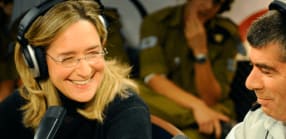
The only "democracy" in Western Asia, againts press freedom. La única "democracia" en Asia Occidental, en contra de la libertad de prensa. ENG ESP
Closure of Army Radio after 75 years. Cierre de la Radio del Ejército, tras 75 años
Publicado hace 4 días.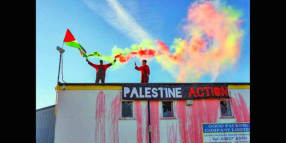
Palestine Action. Huelga de hambre. Hunger strike ESP ENG
La huelga de hambre no puede quedar aislada. The hunger strike cannot be isolated.
Publicado hace 5 días.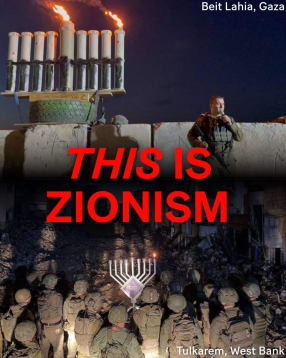
Palestine. Celebrating Hanukkah atop the ruins. Janucá sobre ruinas. ENG ESP
The Israeli state has weaponized and defiled Jewish traditions. El Estado de Israel ha utilizado y profanado las tradiciones judías
Publicado hace 9 días.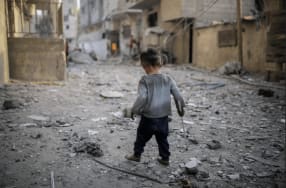
Gaza como cementerio. Gaza as graveyard ESP ENG
Gaza, cementerio de la Humanidad. Gaza, graveyard of the Humanity
Publicado hace 10 días.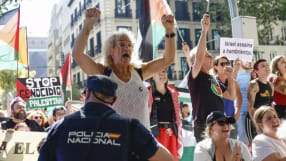
España-Israel, una colisión tan indeseada como inevitable (Real Instituto Elcano)
Las tibias medidas contra Israel desatan la furia contra España
Publicado hace 13 días.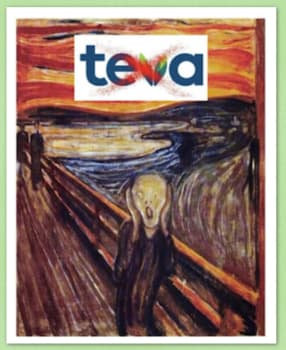
Boycott Teva for beginners. Boicot Teva para principiantes. ENG ESP
How to Boycott Teva Medicines: A Guide to “Direct Action”. Como hacer boicot a Teva: una guía de "acción directa"
Publicado el 10 de diciembre.
Zionism is corrupting Israel (Elbit, weapons and more). El sionismo corrompe Israel (Elbit, armas, y más) ENGL ESP
Zionism is corrupting Israel: its prime minister and its companies (Elbit weapons, Teva pharmaceuticals, for example), etc. El sionismo pudre Israel: su primer ministro y sus empresas (Elbit de armamento, Teva de medicamentos, por ejemplo), etc
Publicado el 10 de diciembre.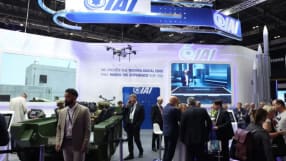
Israel’s Latest Military Tech. Sell. La última tecnología militar de Israel. Venta
Tested in Gaza, Wanted by the West. Probada en Gaza, buscada por Occidente
Publicado el 6 de diciembre.Ver más / See more


